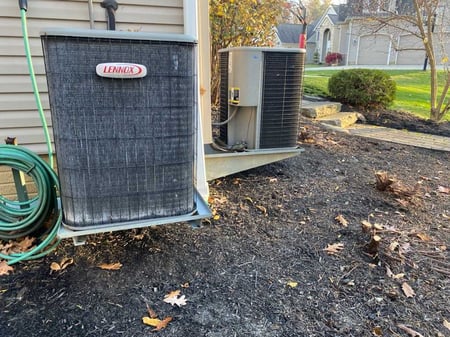Looking back on our decision to push off replacing our tired and non-compliant air conditioning units, my wife and I are relieved they made it through another summer. But on our last HVAC check-up, the technician strongly advised against pushing it off for another year. So, we've decided to face reality and come up with a plan for next year by assessing our needs, researching various models, preparing our budget, prepping the space, and scheduling our timeline.
5 Steps to Replacing My A/C Units
The first step in figuring out which direction to take is to assess what exactly needs to be replaced. Is it just the copper tubing causing the issue, or are there also electrical upgrades needed? By prioritizing these replacements, we can determine if they should be addressed now or if they can be postponed.
To make an informed decision, it's important to research different models, features, and options available in the market. By exploring the various makes and models, we can select the best A/C system that meets our needs. Whether it's energy efficiency, advanced features, or affordability, there are numerous factors to consider before making our final choice.
Of course, budgeting is a crucial aspect of any investment. We need to set aside enough funds for our 2024 plans while remaining flexible in case any issues or off-season incentives/discounts pop up. By allocating the necessary resources, we can ensure that we are financially prepared for the upcoming replacement.
In order to prepare for the installation, it's important to make the necessary adjustments to the space. This could mean removing any landscaping in the way or creating access in the basement for the new units. By planning ahead and making these preparations now, we can streamline the installation process when the time comes.
 We already removed the hedges that were obstructing the a/c units so the techs have better access in the spring.
We already removed the hedges that were obstructing the a/c units so the techs have better access in the spring.
Lastly, scheduling is essential to ensure a smooth transition. By setting our timeline for 2024, we can avoid the rush before warmer temperatures and an increase in service demand. By proactively scheduling the installation, we can prevent potential delays or inconveniences.
Considerations for Migrating off of Sage 500
Now, let's connect this process to migrating off of Sage 500. Just like with our air conditioning units, having a plan is crucial when implementing any new software or system. You need to assess our critical business requirements, including customizations, integrations, and add-ons. By prioritizing the must-haves and retiring obsolete solutions, you can ensure a seamless integration.
Researching different options by industry and technology is a must when finding the perfect publisher/solution match. By attending overview demos and reading success stories, you can gain valuable insights into how these solutions have worked for others in similar industries. This information will help make an informed decision that aligns with your specific needs and goals.
Setting an adequate budget for the software, services, and your time is essential for a successful implementation. You need to allocate the necessary funds to make sure your team can support the transition. Additionally, documenting standard operating procedures, improving workflows, cleaning up data, prioritizing reports, and educating your team about the transition will all contribute to a smoother integration process.
Finally, scheduling is crucial when implementing any new software or system. By creating a project plan with milestones from discovery through evaluation to go-live and optimization, you can ensure that the implementation stays on track and is completed efficiently.
As we navigate the challenges of replacing our worn-out A/C units, it's important to approach the task with a well-thought-out plan. By assessing, researching, budgeting, preparing, and scheduling, we can ensure a successful transition to a more efficient and compliant HVAC system. Similarly, when migrating off of Sage 500, having a plan that includes assessing critical business requirements, researching options, budgeting adequately, preparing your team, and scheduling milestones is essential for a seamless integration. With careful planning and execution, you can look forward to a more comfortable and efficient future.



